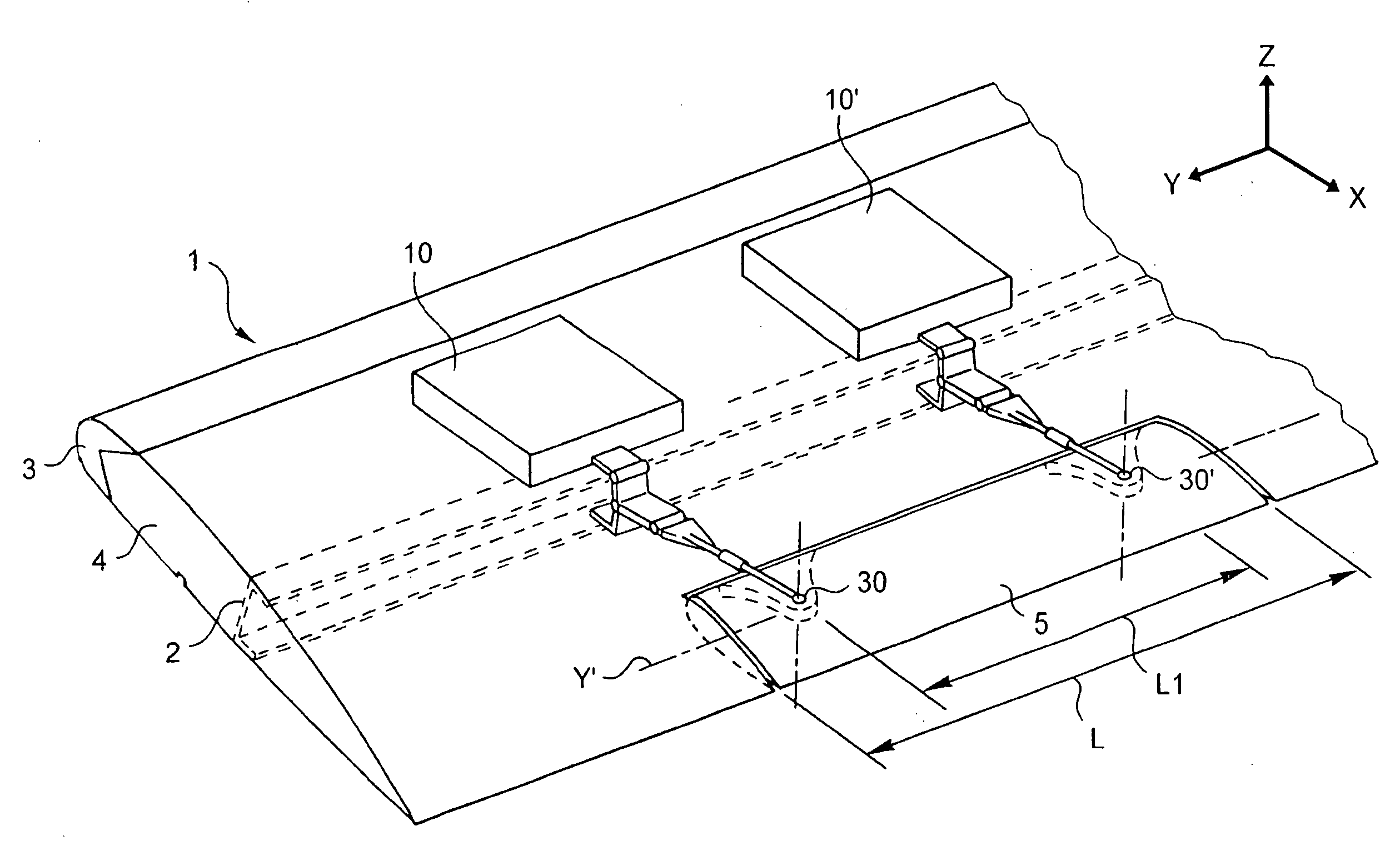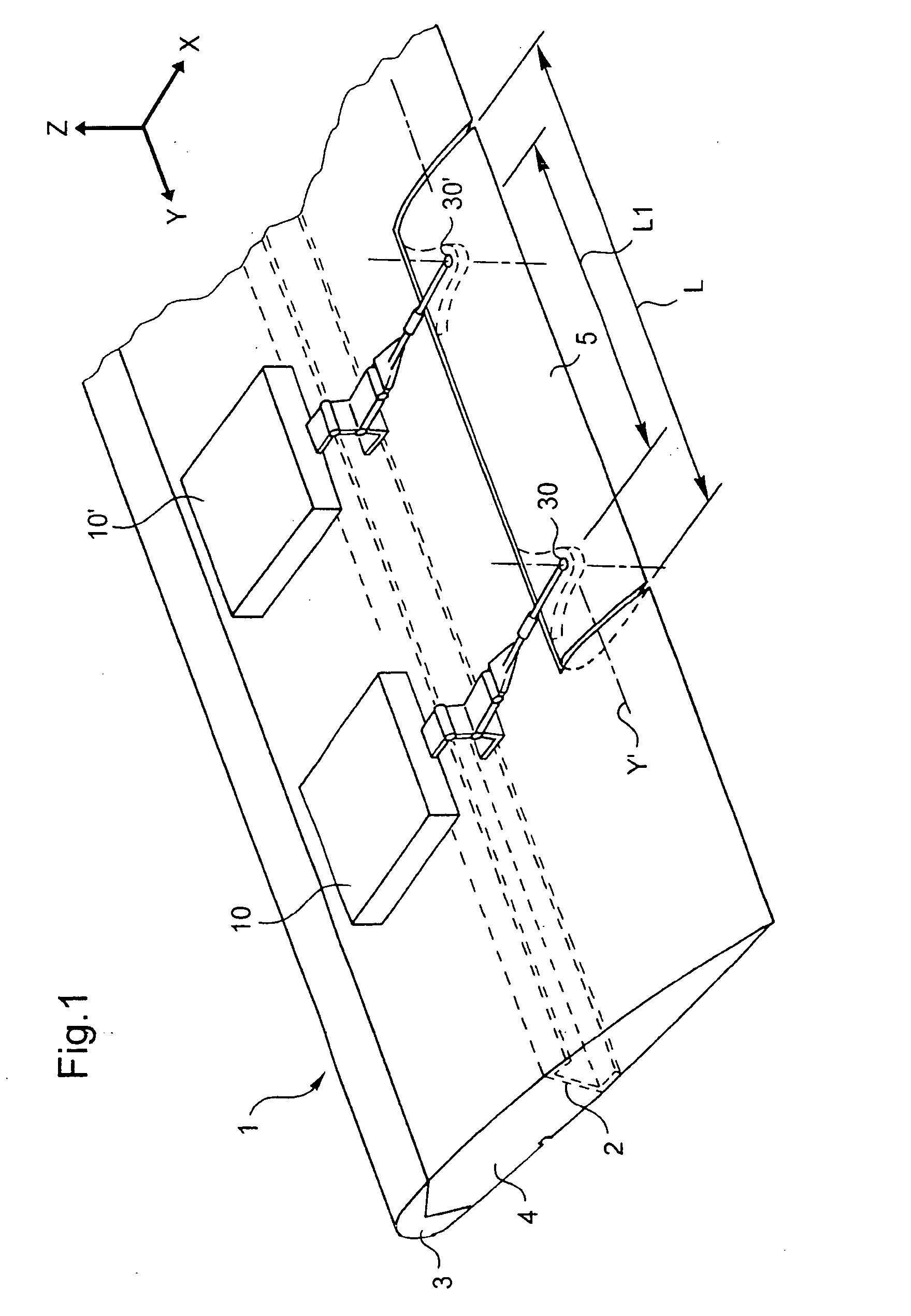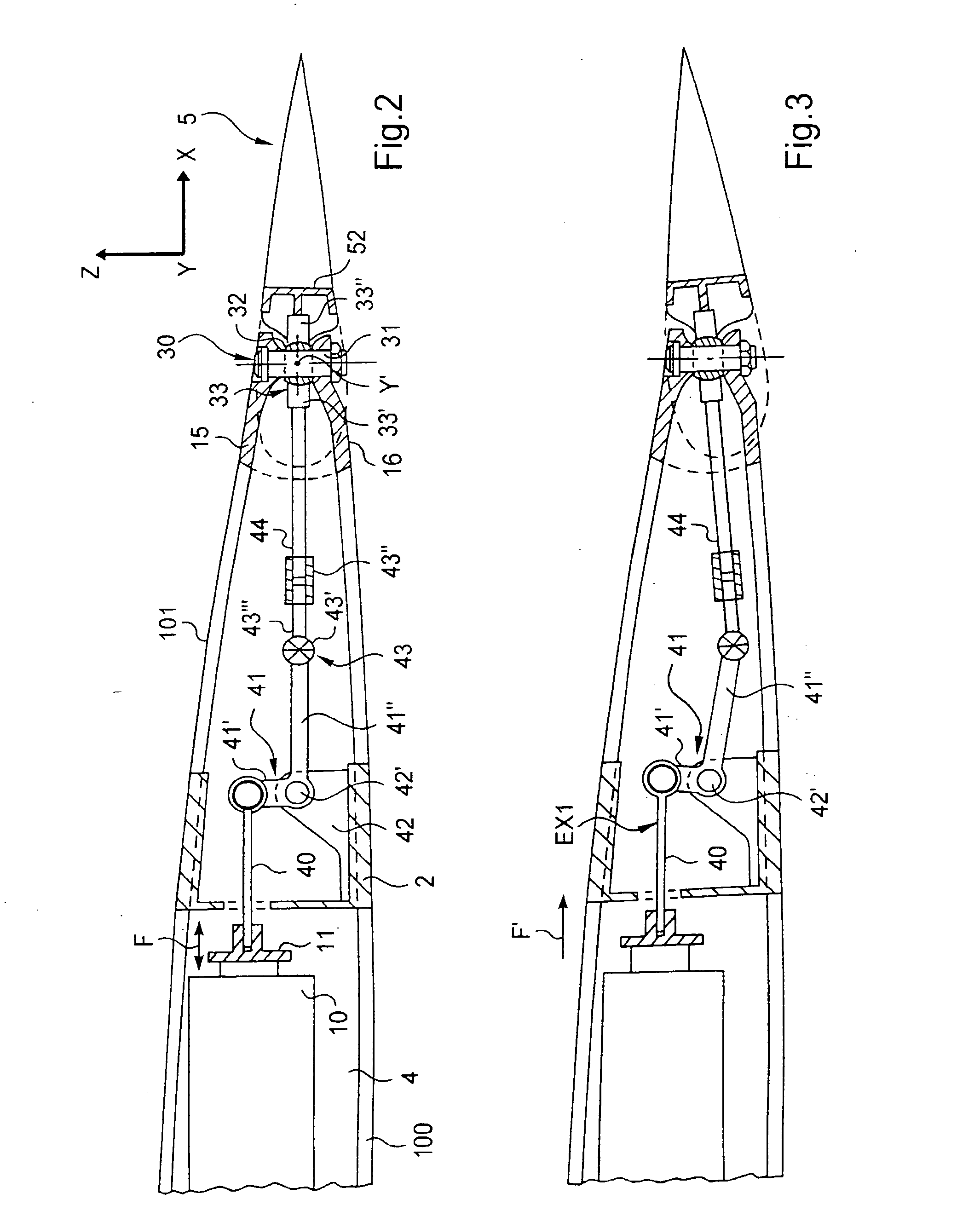Rotorcraft blade provided with a flap tiltable with the help of at least one main ball joint having a first pin that is secured to said blade
a technology of rotorcraft blades and flaps, which is applied in the direction of rotocrafts, liquid fuel engines, propellers, etc., can solve the problems of unusable and dangerous, noise or vibration disturbance, and premature wear
- Summary
- Abstract
- Description
- Claims
- Application Information
AI Technical Summary
Benefits of technology
Problems solved by technology
Method used
Image
Examples
first embodiment
[0037]FIG. 1 is a diagrammatic isometric view showing the invention.
[0038] A rotorcraft blade 1 is provided with a trailing edge flap 5. In addition, two electromagnetic actuators 10 and 10′ are disposed inside the box 4 of the blade 1 disposed between the front spar 3 and the channel-section rib 2 of the blade 1.
[0039] The actuators 10 and 10′ enable the trailing edge flap 5 to pivot about a virtual hinge axis Y′ in order to improve the aero-acoustic, aerodynamic, and vibratory performance of the blade 1. The actuators are themselves controlled by an electronic unit (not shown in the figures) that delivers the flap-control relationship (tilt angle / frequency) as a function of the flight configuration of the rotorcraft. The actuators 10 and 10′ are powered electrically via slip rings disposed in the rotorcraft rotor and via an electrical circuit integrated in the blade 1 along its span.
[0040] In active mode, position sensors deliver signals to the electronic unit to enable it to se...
second embodiment
[0065] With reference to FIG. 5, in a second embodiment, the extensible flexible pivot comprises a spring 45 with turns that are touching at rest. This spring makes it possible both for movements to take place along the axis X and for the crank 41 and the second connecting rod 44 to pivot. The spring presents sufficient stiffness to avoid it becoming deformed as a result of the stresses exerted on the blade 1.
[0066] Furthermore, the extensible pivot is advantageously coated in an elastomer material (not shown in FIG. 5) serving to improve the strength of the extensible pivot while also preserving its flexibility.
[0067] The movement of this second embodiment is then substantially equivalent to that described with reference to FIG. 3.
[0068] Naturally, the present invention can be subjected to numerous variants as to its implementation. Although several embodiments are described above, it will naturally be understood that it is not conceivable to identify exhaustively all possible em...
PUM
 Login to View More
Login to View More Abstract
Description
Claims
Application Information
 Login to View More
Login to View More - R&D
- Intellectual Property
- Life Sciences
- Materials
- Tech Scout
- Unparalleled Data Quality
- Higher Quality Content
- 60% Fewer Hallucinations
Browse by: Latest US Patents, China's latest patents, Technical Efficacy Thesaurus, Application Domain, Technology Topic, Popular Technical Reports.
© 2025 PatSnap. All rights reserved.Legal|Privacy policy|Modern Slavery Act Transparency Statement|Sitemap|About US| Contact US: help@patsnap.com



